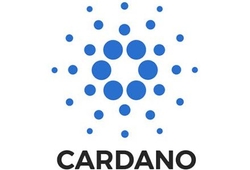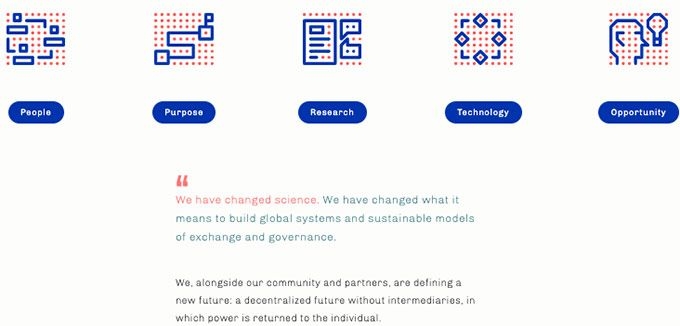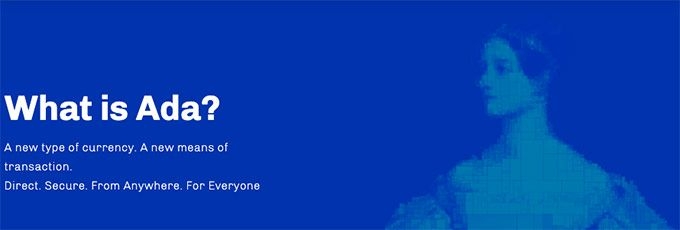
Free Airdrop Season 7 is LIVE! Answer fun questions or do simple tasks to earn rewards from the $30K BitDegree prize pool. Participate Now ! 🔥
The cryptocurrency industry has created lots of opportunities for new exciting projects to enter the market — one of them is Cardano and its coin!
The technology that the Cardano uses is brand new, so I am going to give you a complete guide on everything you need to know. Firstly, I will explain what Cardano is and what are the main aims of the company.
After that, I will explain how the technology works, using really simple real-world examples as well as provide a list of Cardano’s advantages and disadvantages that will help you to decide whether ADA is worthy of your attention.
Before buying ADA, make sure to choose a reliable cryptocurrency exchange, such as Binance or KuCoin, and store your tokens in a secure wallet. The most recommended options include Ledger Nano X and Trezor Model T.
Let’s start by finding out how the Cardano project began!
Looking for the most secure place to buy BTC? I have collected the best-rated crypto exchanges that were approved as the safest platforms for buying BTC below, so take a look.
Pros
- Great team
- Cheap and quick transactions
- No scaling limit
Cons
- Blockchain is still being developed
- Ongoing issues with the wallet
Table of Contents
The Core of Cardano
The Cardano project started in 2015. The company behind its development is called Input-Output Hong Kong (IOHK), which is managed by the co-founder of both BitShares and Ethereum, Charles Hoskinson.
The aim of Cardano is to create a blockchain that can perform much better than older blockchains like Ethereum, meaning that it should process more, cheaper and faster transactions.
Charles Hoskinson believes that Cardano is a third-generation blockchain, whilst Bitcoin and Ethereum are first and second. So, rather than copying the code of other blockchains, IOHK has created its own new blockchain.
People sometimes think that Cardano and ADA are the same, however, there is a slight difference. Cardano is the name of the blockchain that allows people to send and receive funds. ADA coin is the name of the cryptocurrency.

This is similar to how Ripple works, where Ripple is the name of the blockchain and XRP is the name of the cryptocurrency.
The Cardano coin blockchain will also allow people to create smart contracts, just like the Ethereum blockchain. Smart contracts allow two or more people to enter an agreement without needing a third party, meaning that once pre-defined conditions have been met, everything else is automated.
Like most other blockchains, Cardano is decentralized, meaning that it is not controlled by any single authority. Instead, transactions and smart contracts are verified by the community, who do so by contributing their computing power. However, Cardano does things differently from Bitcoin and Ethereum (I will explain everything more detailed later).
To help raise funds for the development of Cardano, the team raised $63 million during its ICO. Since then, the ADA coin has reached heights of $33 billion in market capitalization!
Note: ICO stands for “Initial Coin Offering”. It is a way for cryptocurrency companies to raise funds. In the first three months of 2018 alone, more than $6 billion was raised in ICO’s!

So, now that you understand how Cardano and the ADA cryptocurrency started, as well as what they plan to do, then the next part of my guide is going to explain how it works.
How Does Cardano Work?
First, it is important to understand how the Cardano blockchain functions. It can be split into two different layers:
- Settlement Layer: The settlement layer has been built and is now fully operational. This allows users to send and receive ADA coins, wallet to wallet. This is similar to how users can transfer Ethereum (ETH) to each other.
- Computation Layer: The computation layer is still being developed. Once it is launched, it will allow users to create and enter into smart contracts.
That's why Cardano is different from the earlier blockchains that normally operate on a single layer. Two separate layers bring some potential benefits to Cardano users.
Firstly, the computational layer is more adaptable than the likes of Ethereum, as small changes can be made for different end-users. For example, since different nations have their own regulations, Cardano can change how data is stored and accessed depending on their laws.
To make sure you understand how both settlement and computation layers work, here is a quick real-world example.
- John needs to hire an electrician to fix his kitchen lights.
- John enters into a smart contract agreement that is stored on the computation layer.
- The agreement states that as soon as the electrician has fixed John’s lights, the agreed funds will be released.
- When this happens, the smart contract is transferred to the settlement layer, which allows the electrician to be paid in ADA cryptocurrency.
- Everything is fully automated, meaning that there is no need for a third party.
So, now that you know the difference between the settlement layer and the computation layer, I will now explain how the transactions are verified!

Did you know?
All Crypto Exchanges may look similar to you but they're NOT all the same!
How Are ADA Coin Transactions Verified?
I mentioned earlier that the Cardano platform is decentralized, meaning that no single authority has control over the network. This means that the network is operated by miners.
However, Cardano uses a different model, which it calls “Ouroboros”. Before I explain how it works, let me quickly explain how other blockchains like Bitcoin are different.
Bitcoin uses a consensus model called “Proof-of-Work”. To help authenticate a transaction, miners use their computing power to solve a really difficult puzzle. It’s like a mathematical equation that is so difficult, no human being could solve it!
Whichever miner solves the puzzle first, they get the reward that is paid in Bitcoin! The problem with Proof-of-Work is that as the puzzle becomes more and more complex, miners need to use more and more electricity.
In December 2017, it was reported that Bitcoin Proof-of-Work miners were using more electricity than the entire nation of Ireland! Not very economical, right?
The Cardano network confirms transactions using a consensus mechanism called Proof-of-Stake:
- People who want to help validate transactions are called validators.
- Validators must freeze some of their ADA coins, which is called the "Stake".
- Once a validator helps verify a transaction, they receive additional ADA cryptocurrency as a reward.
- The higher the stake, the more chance a validator has of receiving the reward!
- The amount of coins they receive is based on how much “stake” they have.
This system is far more efficient and environmentally friendly than Proof-of-Work as it requires much less electricity, which means transaction fees are lower as well.

Although there are other Proof-of-Stake blockchains available, the Cardano team says that none of them offer a truly random way of selecting a validator. This is why they built their Ouroboros protocol on top of the standard Proof-of-Stake model, as it ensures everybody gets a fair chance of earning the reward.
This is sometimes called “The Honest Majority”, which means that if people have a big stake in the blockchain (for example, having lots of ADA coins), then they have a reason to make sure that the network remains secure, stable and most importantly – honest.
So, now that you know how transactions are confirmed and validated, let's see how the Cardano platform performs!
Is Cardano Scalable?
There are so many different blockchains in the market, and it is important to understand what makes each of them unique. One of the most important things to consider when deciding how well a project can perform is its scalability.
In the cryptocurrency industry, scalability is how many transactions a blockchain can process in a certain time-frame, however, it is normally presented as “transactions per second”.
Older blockchains like Bitcoin and Ethereum have big problems with scalability, as they are very limited to the number of transactions they can process at one time. In fact, Bitcoin can only process 7, while Ethereum averages a maximum of just 15. Again, this is where Cardano has an advantage.
When transactions are verified on the Bitcoin blockchain, they remain on the public ledger forever. This means that over time, the blockchain ledger becomes bigger and bigger.
The problem with this is that every single miner on the network must keep a copy of every single transaction. This causes scalability issues.

Cardano, however, is building a blockchain that does things differently by separating data that is not relevant to the people involved in the transaction. For example, if John sends 100 ADA coins to Sue, they are the only two people that are involved in the transaction.
As a result, when validators help confirm the movement of the funds, they only need to maintain the data that is relevant to the transaction, not the entire blockchain!
The team is also aiming to install a protocol called “Sharding”. The way this works is that as more and more people use the network, the number of transactions per second increases.
Cardano performed a test in late 2017 that allowed the blockchain to process 257 transactions per second, which is significantly more than Bitcoin and Ethereum. However, the long-term aim is to increase this number to tens of thousands per second.
Daedalus Wallet
When it comes to storing your ADA coin, Cardano has its own official wallet called Daedalus. However, there have been many reports from the cryptocurrency community saying that the Daedalus wallet has many issues. This includes things such as being unable to connect to the network, sync blocks and transactions not reaching the receiver.
If you're looking for the most secure and reliable wallet, you should check out Ledger Nano X and Trezor Model T. Since they're offline wallets, your assets will remain safe at all times.

|

|
|
|---|---|---|
| Hardware | Hardware | |
| Safely Storing, Sending, and Receiving Different Cryptocurrencies | Easily Controlling Funds and Managing Balance | |
| All Ledger Nano X Coupons | See All Coupons of Best Wallets | |
| One of the best hardware cryptocurrency wallets ever made. | One of the most-secure cryptocurrency hardware wallets on the market. | |
|
Visit site
Read review |
See TOP10 Brands
Read review |
Table: Some general information about the Ledger Nano X and Trezor Model T hardware crypto wallets
So, now that you know about Cardano’s plans for scalability, the next part of this ADA cryptocurrency guide is going to look at what it can be used for, as well as how it could be abused!
How Can Cardano Be Used And Abused?
First of all, ADA Cardano coin can be used in the same way as Bitcoin — a global payment system. However, as I mentioned earlier, Bitcoin can only process 7 transactions per second. No global payments system could survive if it was only about to scale up to 7 transactions per second. In fact, Visa alone processes an average of 1,667 transactions every second!
So, if the Cardano team is able to meet their objectives of “tens of thousands” per second then the network would work perfectly as a payment system.
The second main function of ADA coin is to allow people to create smart contracts and dApps (decentralized applications). This could be anyone from corporations, governments or even individuals.
However, if Cardano is to get their smart contract protocol to go global, they need to improve their scalability issues.

If Cardano is able to meet these objectives, then their technology would be perfect for everyday applications, as it would be near impossible for people to hack and the application would never go offline. It would also mean that confidential data remains confidential!
Criminal Activity
Blockchain platforms like Cardano are perfect for committing an anonymous crime (this is not a recommendation).
But why?
Well, when you send or receive an ADA coin, you do not need to reveal your real-world identity.
Instead, the only thing that people can see is your personal wallet address, which looks something like this:
Ae2tdPwUPEZKmwoy3AU3cXb5Chnasj6mvVNxV1H11997q3VW5ihbSfQwGpm
Allowing people to send and receive funds anonymously means the platform could potentially be used for money laundering or tax evasion. This is because it is near impossible to find out who is actually involved in a transaction.
It also allows people to sell illegal goods and services online without having to reveal any real-world payment details.
Cardano team is also working on a protocol that will allow users to share their metadata if they decide to. Metadata carries certain information about a transaction, such as:
- What did X spend the cryptocurrency on?
- Who did X give the coin to?
- Where did X get her ADA coin from?
The above protocol will allow banks to use the Cardano blockchain, as they will be able to comply with national regulations.
Pros & Cons of ADA Cryptocurrency
Pros
- Great development team. The founder has been working with successful projects, such as BitShares and Ethereum.
- It will be the first blockchain to use multiple layers (settlement and computational layer).
- No scaling limit. The more people use blockchain, the more transactions can be processed.
- The ADA cryptocurrency offers cheap and quick transactions.
- Cardano’s consensus mechanism is more environmentally friendly than older blockchains, as well as being fairer.
Cons
- The blockchain is still being developed, so some of the Cardano claims are theoretical.
- Other blockchains, such as Ripple, Stellar Lumens, and NEO can already process more than 1,000 transactions per second.
- The maximum scalability at the moment is only 257 transactions per second.
- Ongoing problems with their official wallet.

Did you know?
All Crypto Exchanges may look similar to you but they're NOT all the same!
Conclusion
So, this is the end of this "what is Cardano?" guide!
I hope that you found this Cardano and ADA cryptocurrency guide helpful and managed to understand all of the aspects regarding ADA coin.
If you're interested in buying ADA coin, I'd suggest checking the Kucoin platform first. It will allow you to buy and sell ADA easily. What is more, even though the company has its own wallet, there are way more secure options, such as Ledger Nano X and Trezor Model T.
If you find it difficult to understand how to buy ADA coin, here are a few easy steps:
1. Get a reliable crypto wallet (Ledger Nano X and Trezor Model T are highly recommended).
2. Sign up to Kucoin.
3. Purchase ADA coins from Coinbase.
4. Transfer ADA coins to your wallet.
I hope that this was helpful!
The content published on this website is not aimed to give any kind of financial, investment, trading, or any other form of advice. BitDegree.org does not endorse or suggest you to buy, sell or hold any kind of cryptocurrency. Before making financial investment decisions, do consult your financial advisor.












